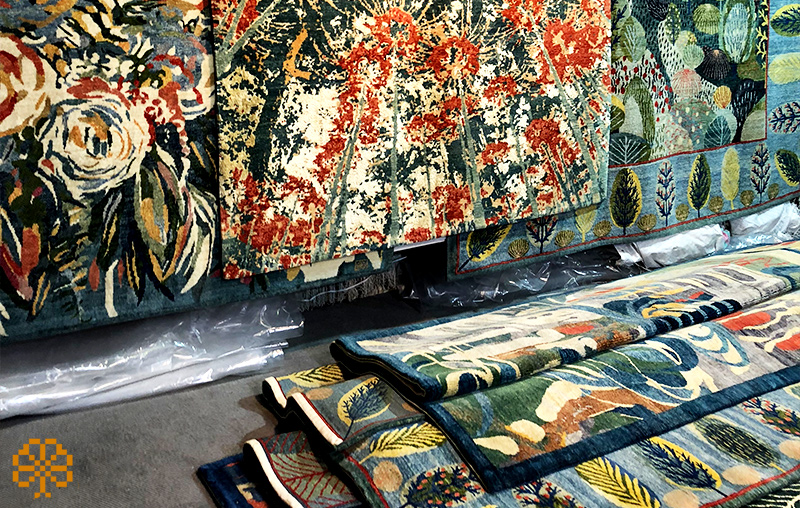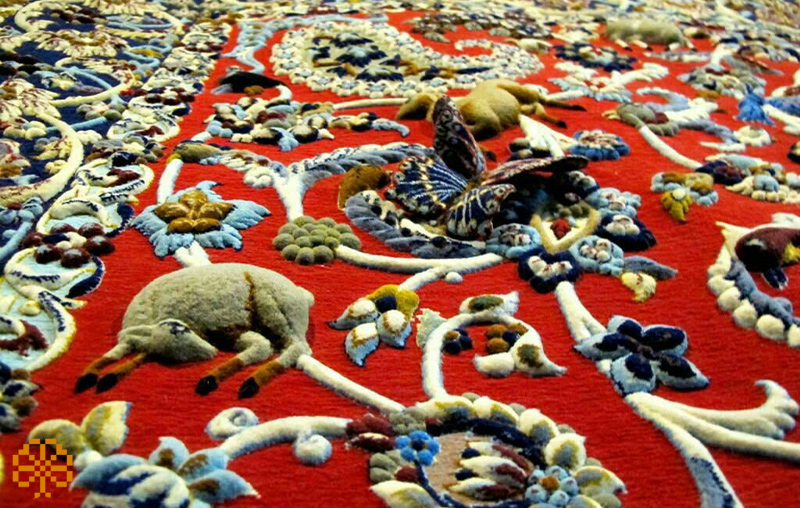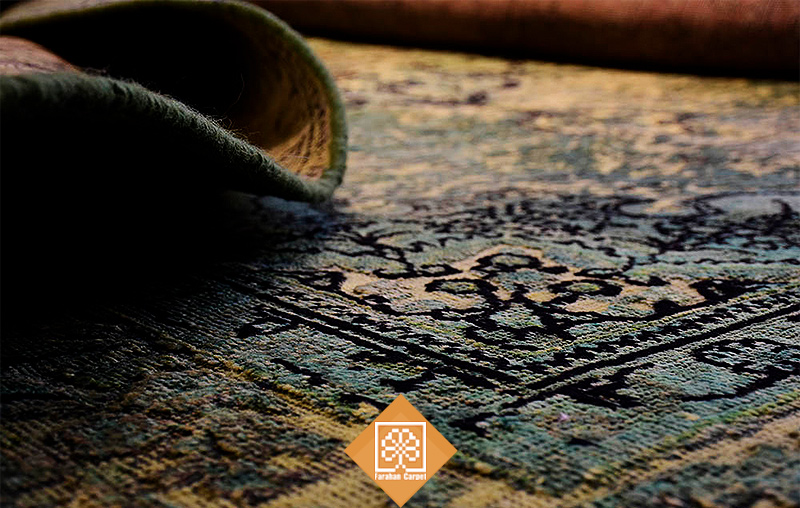Types of carpet sleep and recognizing its head

Types of carpet sleep along with carpet heads and their study are among the items that all experts in this field and carpet lovers need to be acquainted with in detail. Carpet is one of the three-dimensional products that consists of three aspects, the vertical yarn which is called warp, the horizontal yarn or the same fabric and the third case of height or the same knots of the carpet that make our carpet sleepy. .
In this article about Farahan carpet, we intend to first briefly introduce the definition of carpet sleep and then, by recognizing the types of carpet sleep and carpet weaving, we try to provide complete information for you, the lovers of this basin.
What is carpet sleep?
As we told you at the beginning of the work, carpet sleep is formed from lint and carpet knots, and it is called sleeping of these lint and their position in the term carpet sleep.
Carpet lint, which forms the outer surface of the carpet, can have different shapes and designs for your carpet, depending on the material used in it.
In hand-woven and machine-made carpets, it is generally used to fill both silk and wool for carpet weaving, which in silk weaves, both quality and price are basically higher than wool. Of course, this is not always the case and you should consider different features and items in handmade silk carpets.
Carpet sleep in different regions is sometimes called by other names, the most important of which is carpet meat. Before we talk about the types of carpet sleepers, it is necessary to mention that:
Knots that are tied in the threads of the carpet make your carpet sleepy. When a row of knots is tied, it is time to weave the yarn or yarns (sometimes up to 3 times the weft yarn on Each ridge is placed) on these nodes.
When this process goes to the end of your carpet weaving, it causes your carpet to fall asleep, which depending on the type of these knots and the weaving of the carpet, has different types, which we will introduce to you in the following:
Recognize the types of carpet sleep
In many cases, we see that different models are introduced to introduce different types of carpet sleepers, which we must say professionally, this issue will not be outside of these 5 items that we introduce to you:
1. Original sleep
Among the types of carpet sleep, the most common and famous type of carpet sleep can definitely be introduced as the original sleep, which is also known as ordinary sleep in many people.
When you start weaving the rug and moving from the bottom to the top of the rug at the same time, after finishing the work, your rug will have a top-down sleep, which is called the original or normal sleep.
2. Kach sleep
Among the types of carpet sleepers, we want to go to an option that is for carpets that are woven in an asymmetrical knot method and gives you a different feeling when you touch them.
If we want to introduce this node to you briefly, it should be said that as its name suggests, in this type of node, its shape does not have a special symmetry, which is classified into two asymmetric nodes, left and right, depending on the type of texture. You can read more about this type of knot in the article on types of carpet knots in detail.
When you use asymmetrical knots in the texture of your hand-woven carpet, a dream is created in your carpet that is inclined to the left (from right to left), in this case, the carpet is called kach or oblique sleep. .
3. Slanted or skewed sleep
Unlike the previous section, in this section we are going to go to sleep carpets that use symmetrical knots in their texture.
Nodes that have a symmetrical shape in terms of movement are called symmetrical nodes. For easier understanding, it should be noted that in symmetrical nodes you can divide the shape of the node into two halves symmetrically. This type of shit is similarly divided into two types of right and left symmetrical knots.
Now, among the types of carpet sleepers, rugs that are woven with symmetrical knots are called oblique or oblique sleepers, which have a sleep from left to right.
4. Reverse sleep
Among the options that we have studied so far about different types of carpet sleep, the only carpet sleep that can give a special effect to your carpet is reverse sleep, which is very important for the texture of prominent carpets.
If we want to explain this type of knot to you simply, we must say that all the dreams that we have examined so far for you, if done in reverse, the result of your work is a carpet with a reverse sleep.
In fact, reverse sleep is a dream that is from the bottom up or from right to left (in the case of symmetrically knotted carpets) and vice versa (in the case of asymmetrically knotted carpets).
Read more: Expertise in handmade carpets to evaluate and calculate its price
5. Sleep on your back
Back sleep is a dream that is formed and created from behind the carpet by the arch of knots. In carpet weaving, there is a method to determine the length of the carpet knot leg, which is done using a metal tool called a cage.
The device, which is graded in millimeters, is inserted vertically into the villi to determine the size of the villi leg. Of course, this measurement must be done several times and finally determine the average length of the node stems. The average result is then calculated in millimeters.
It should be noted that back sleep is a bit difficult to understand among different types of carpet sleep, and we recommend that you seek the help of an expert to explain it to understand it accurately.
Introducing Carpet Headband
Since after introducing different types of carpet sleepers, we thought it necessary for you to have a brief knowledge of carpet weaving, but since weaving is a complete and complete topic in itself, we have examined it separately for you.
The meaning of the term Shirazeh in carpet weaving simply means: from several colored yarns (3-5) yarns of the same color on the side of the carpet, which are wrapped around 2 to 6 (strands) of yarn next to the carpet. In general, it has three important tasks in weaving and preparing carpets:
- Inhibition of the lateral strands
- Arranging and refining the edges of the carpet
- Cover the mats next to the carpet
If we want to explain these tasks in a comprehensible way to you carpet lovers:
Shirazeh has the same role in the width of the carpet as kilim weaving and chain weaving play along the length of the carpet, and that is to strengthen the strands in the width, or in other words, it strengthens the right and left sides of the carpet.
If you have any questions or comments about Shiraz and different types of sleep, and you feel that there may be a point about these issues that we have not addressed, we would be happy to send it to us in the comments section so that we and carpet lovers can read about them. To use l






